The Coffee Issue — May 24, 2019
The Slow Burn of Café Touba in Cape Town
In Cape Town, South Africa, Senegalese immigrant and café owner Khadim Diagne offers an alternative to flat whites and cortados with café Touba, the aromatic and spicy coffee from his homeland.
Words by Ilana Sharlin Stone
Photography by Claire Gunn
Cape Town, at the southern tip of Africa, has hip coffee places like Manhattan has Starbucks. Over the past decade, an emergence of these shops with copper accents, black and white tiles, potted succulents and wooden tables sprinkle nearly every block of the city center. Most serve good coffee.
You want a cold brew or a double espresso? We’ve got options, and many are fueled with coffee beans grown in other African countries such as Uganda, Tanzania and Rwanda (although still thousands of miles from South Africa, which is not a coffee producing country).
You want a coffee that’s a true expression of Africa? From Africa—the continent where coffee originated? That’s another story, and for the moment, one that belongs to Senegalese immigrant and entrepreneur Khadim Diagne, proprietor of Khadim’s Café. His is the only place in town where you can drink a traditional Senegalese café Touba, the aromatic blend of coffee and djar (also known as grains of Selim, Selim pepper and Guinea pepper). Djar is a peppery spice with avowed medicinal powers that comes from the pod-like fruits of the tree classified as xylopia aethiopica.
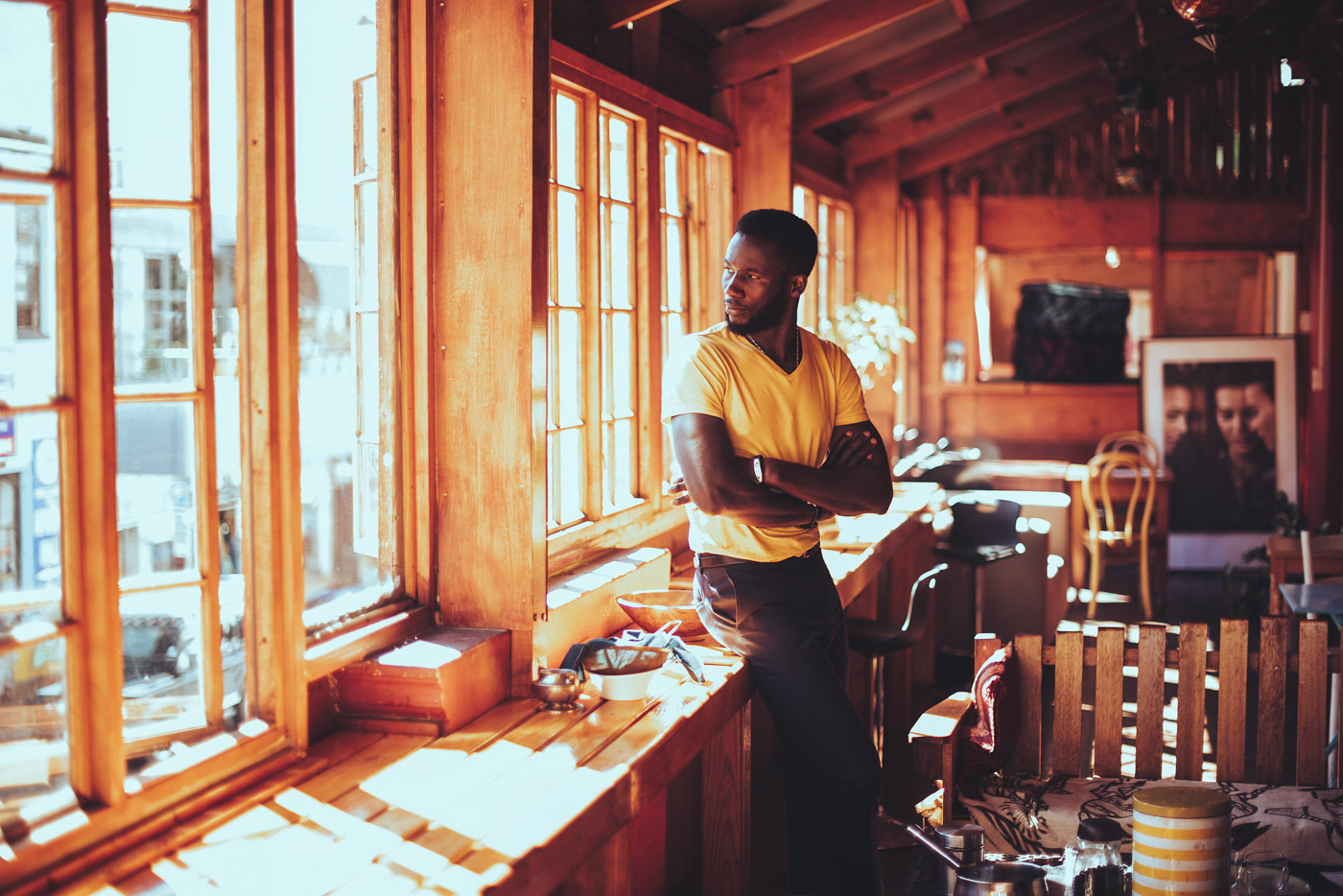
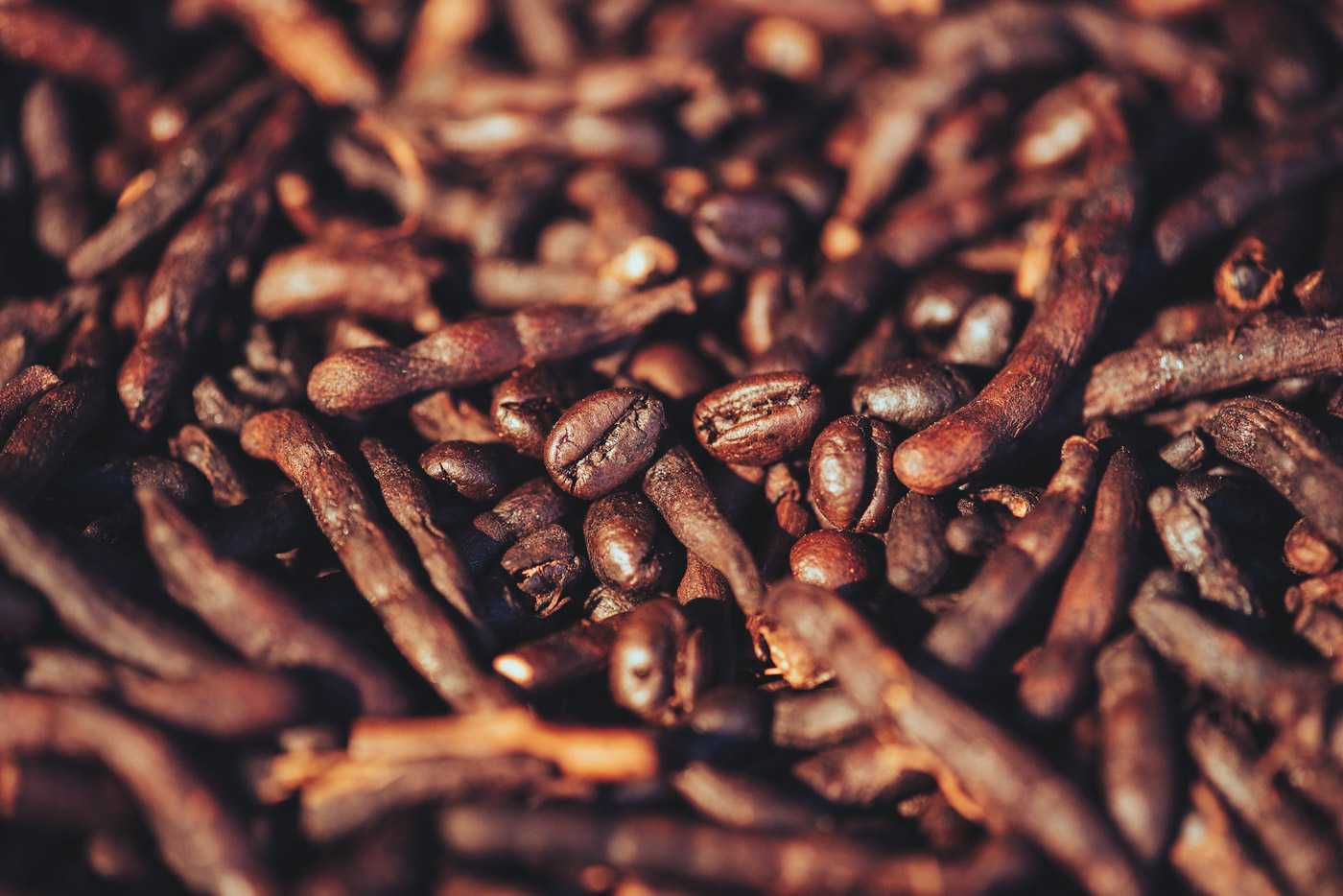
To clarify the geographic scale we’re talking about here (Africa is all too often lumped into one continent of common culture by non-Africans), lest you think these two countries are neighbors, Senegal (on the horn of Africa) and South Africa are far apart—some four thousand miles as the crow flies, and six thousand miles over land.
The corner of Cape Town’s Church and Long Streets is a crazy colorful confluence of indie fashion, antique dealers, and African shops like Mali South and the African Mall, where Khadim’s Café was first located. The café is now across the street in a building called Windsor House that dates back 120 years, its name a relic of South Africa’s colonial past. The entrance, up a flight of worn wooden stairs, is modest and mysterious, and for now, unmarked by signage. Once you enter Khadim’s, sunlight pours through the windows of this enclosed tin-roofed wooden balcony with mismatched furniture and African art. Like the smell of spice, Khadim’s is warm and magical.
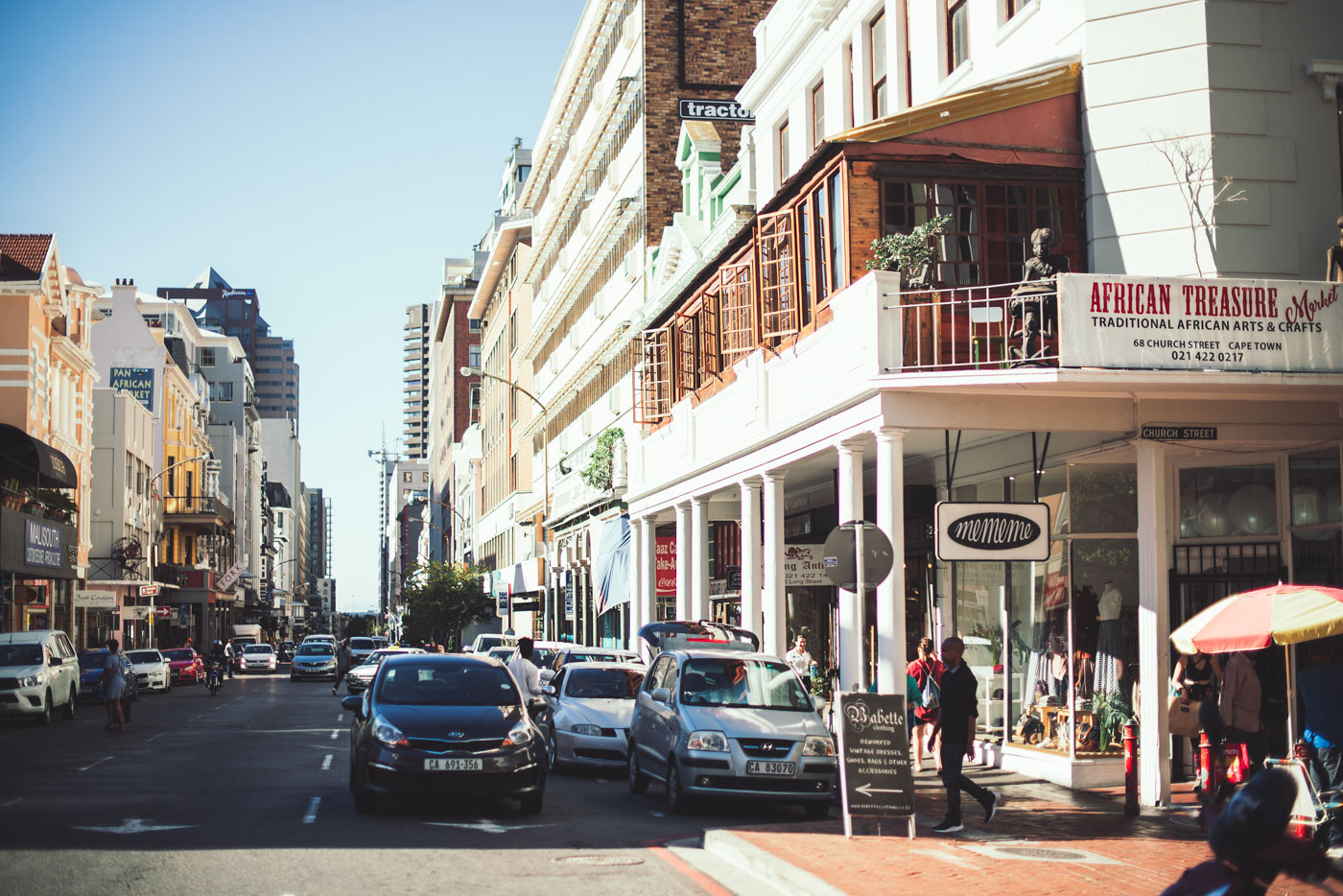
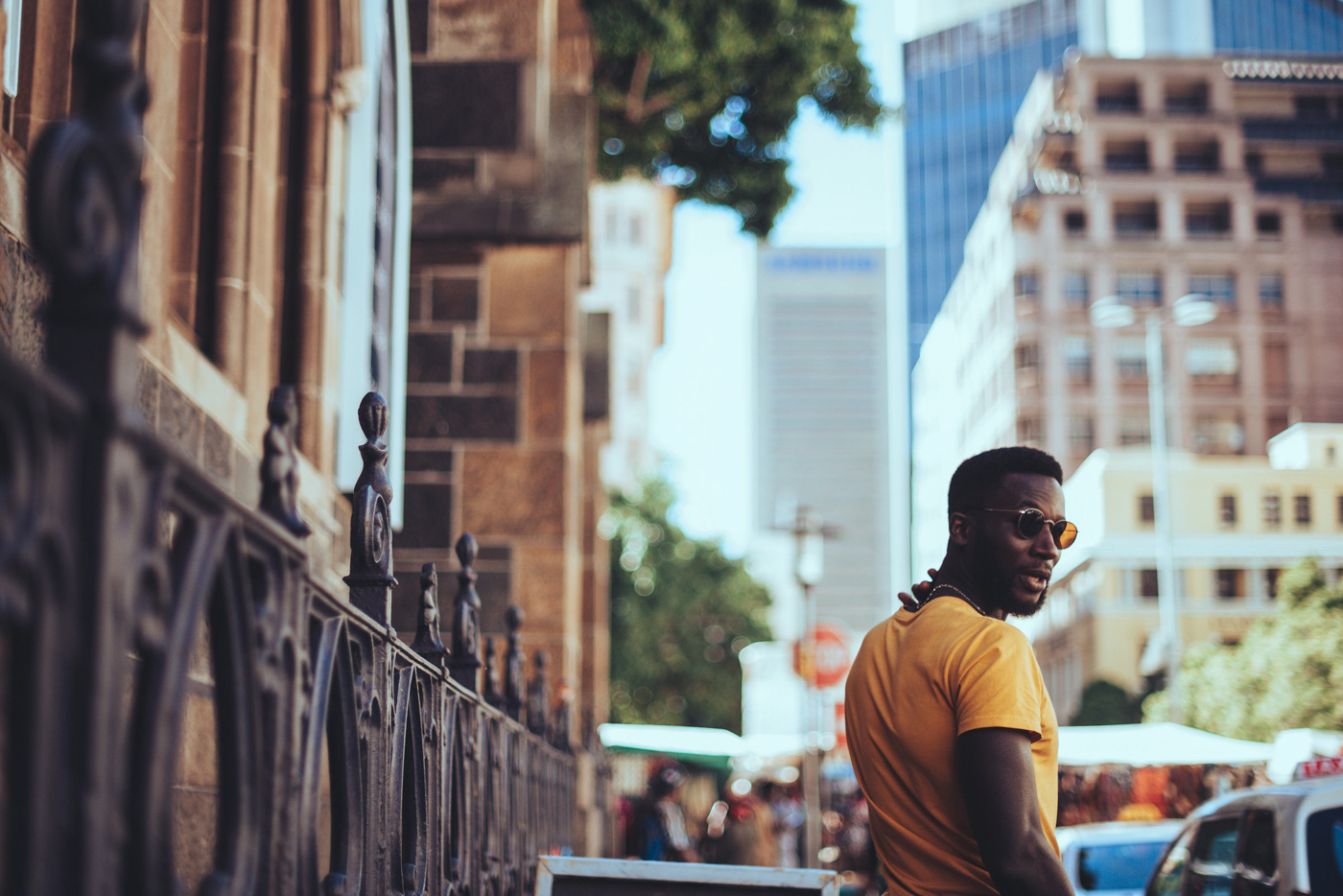
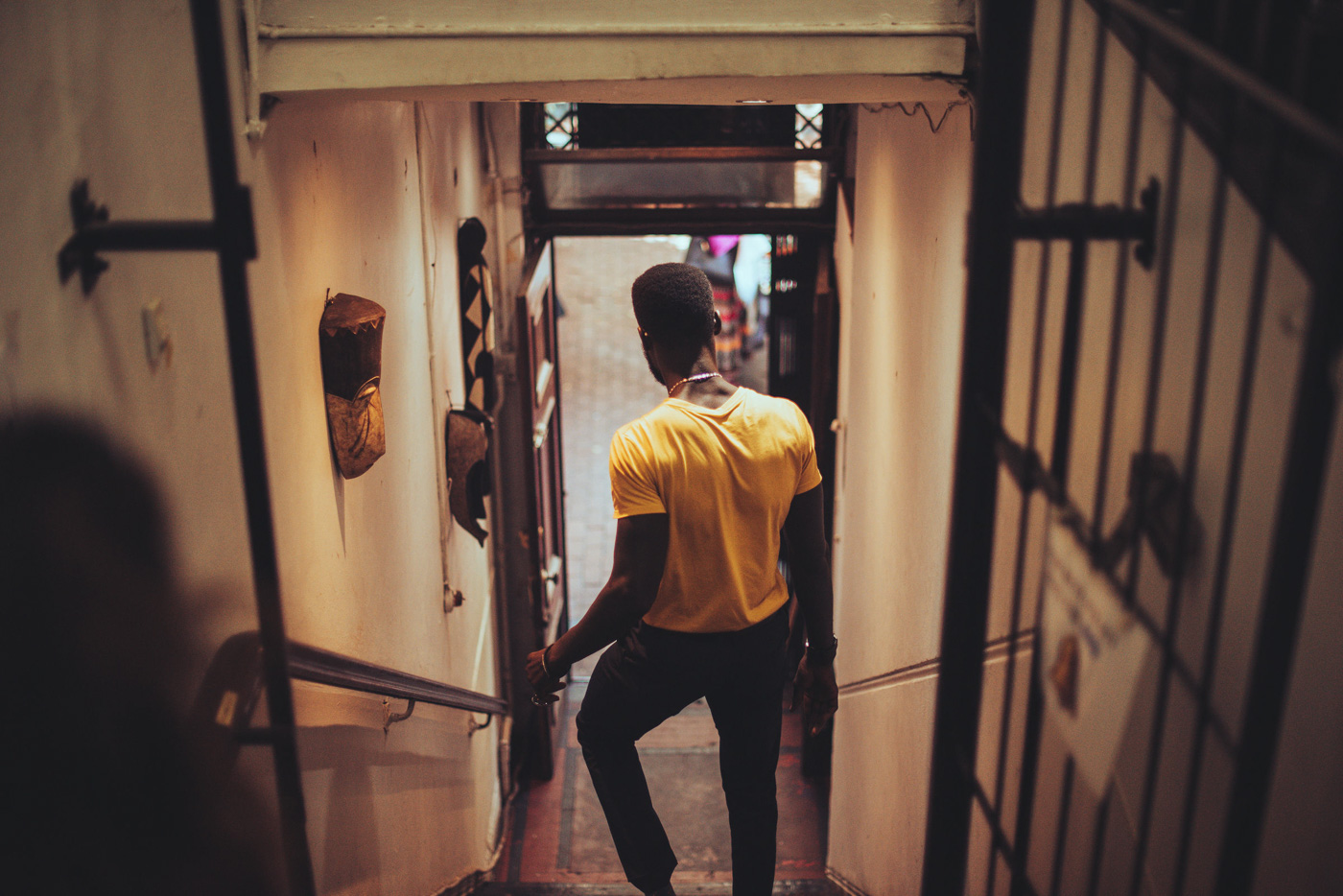
Café Touba gets its name from Touba, Senegal’s second largest city. The story goes that the city’s founder and spiritual leader Cheikh Ahmadou Bamba (who also founded the Mouride brotherhood), brought the coffee drink to Touba from Gabon, where in the late nineteenth century, he was exiled by French colonialists for his pacifist resistance against their occupation. The drink was seen as a panacea to the Sufi lifestyle of religious devotion: the combination of coffee and djar, a means of keeping chanters awake and focused through long nights of prayer. According to Diagne, it remains a popular drink in Senegal today, particularly in Touba.
Diagne imports his café Touba from Senegal, which is not a coffee producing country (the beans are grown in Guinea and Cote d’Ivoire). The coffee is dark roasted, ground in Senegal, and blended with the spice at a ratio of seventy-five percent Arabica coffee to twenty-five percent djar. Cloves are a common addition to the mix, but Diagne prefers his café Touba without. Djar is prized for its range of medicinal properties, which can positively impact high blood pressure, diabetes and other diseases, Diagne says.
Traditionally, djar—which looks like a black knobby pod—is ground in a wooden mortar and pestle. To demonstrate, Diagne mixes ground coffee with djar he has just pounded, then spoons it on top of a moist black cloth stretched over a pot. It’s a cloth he’s been using for over two years. “The longer you use it, the better it gets,” he says. He slowly pours hot water over the coffee and it filters into the pot. The smell is intoxicating.
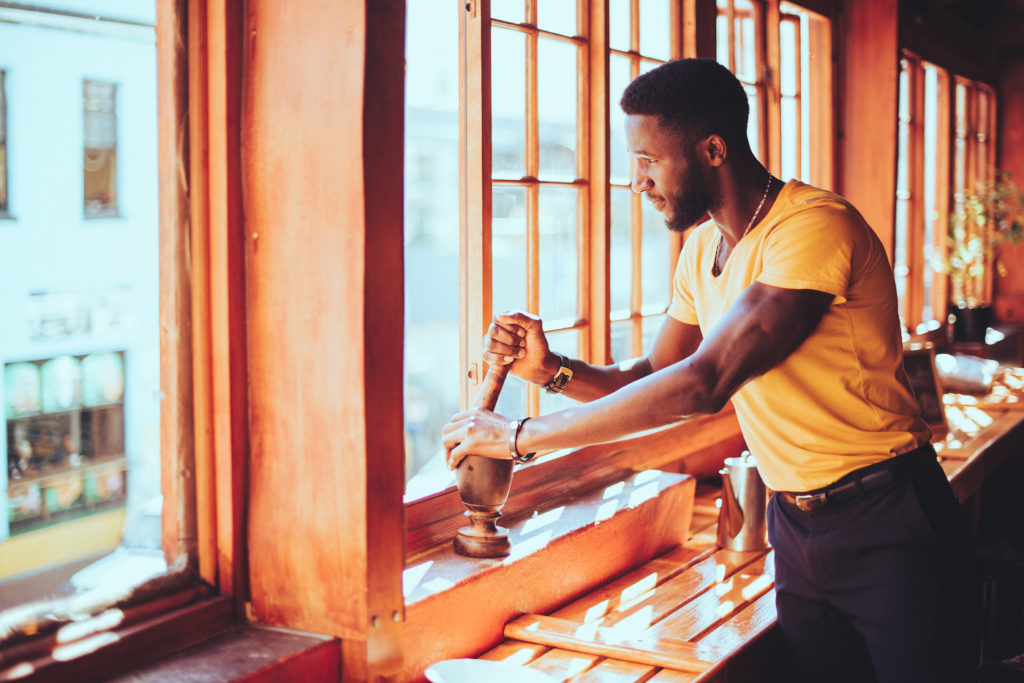
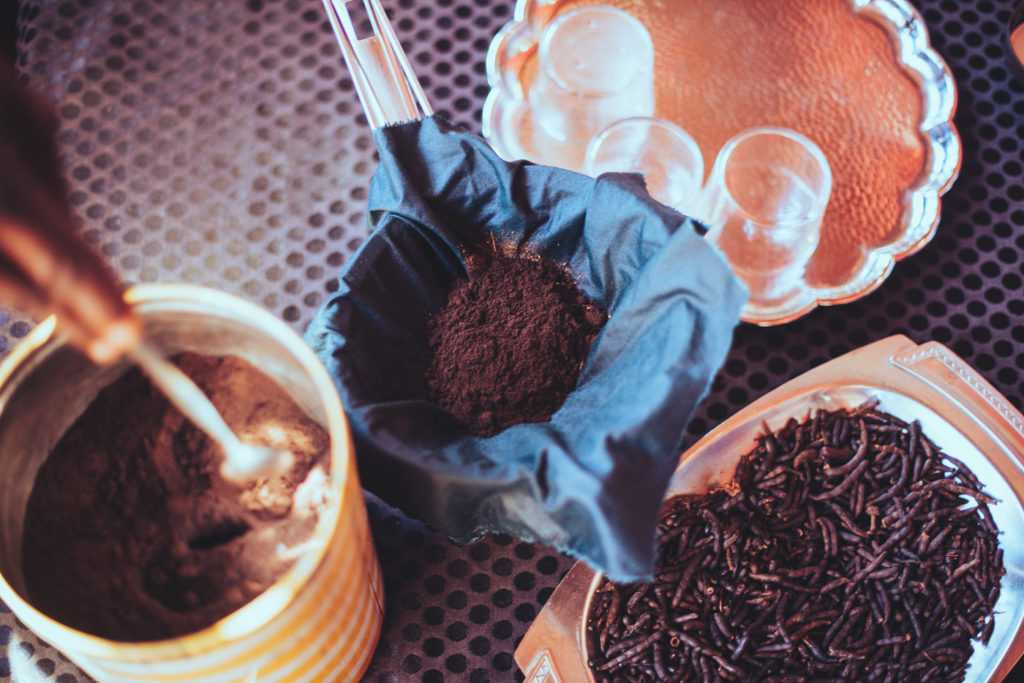
What follows looks like sorcery or at least excellent showmanship: a dramatic pouring and re-pouring of the coffee (with added sugar) from pot to pot at a great height, and ultimately into small glasses. The idea is to work up as much foam as possible on top of the drink. Given its intensity, I cannot imagine what it would taste like without sugar.
It is smooth, musty, spicy and somewhat smoky, with a slow and gentle burn that stays with you long after you finish. Diagne tells us he drinks three to four cups every day.
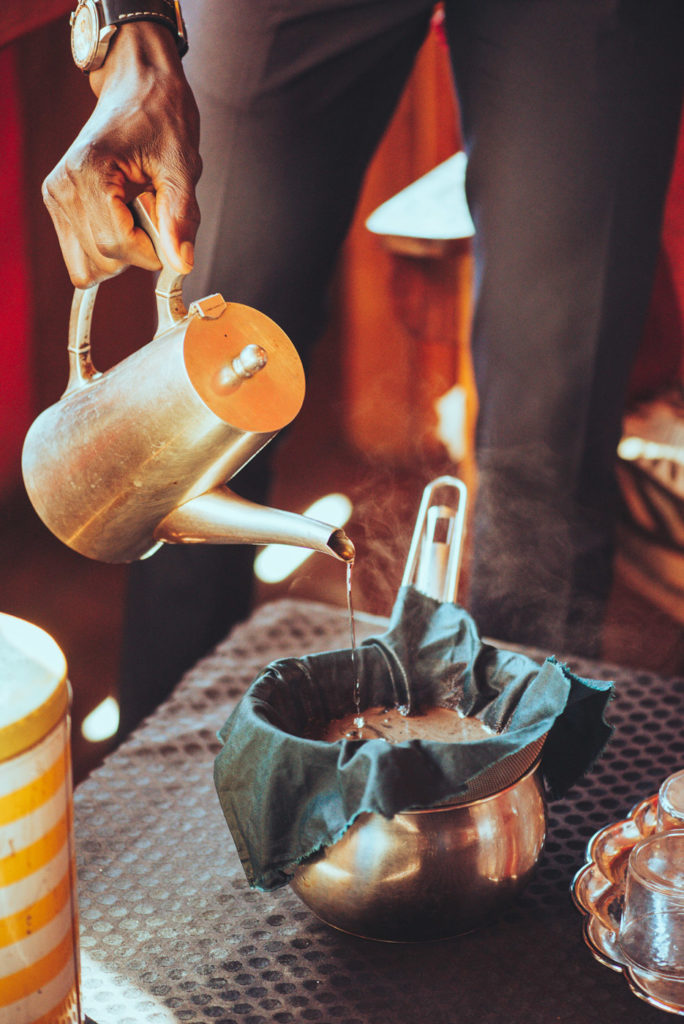
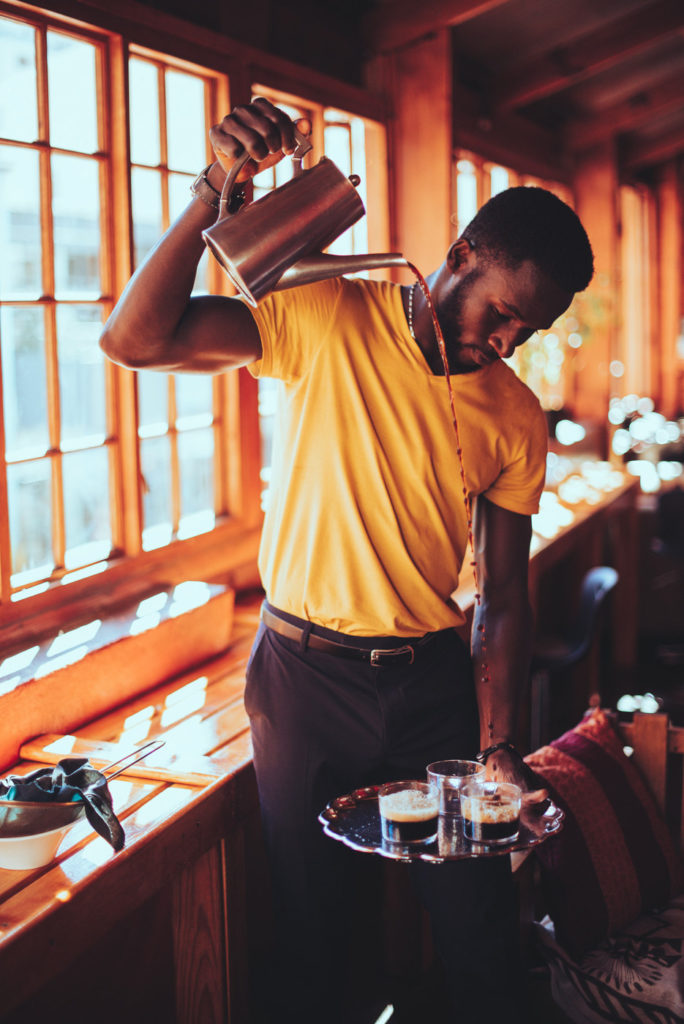
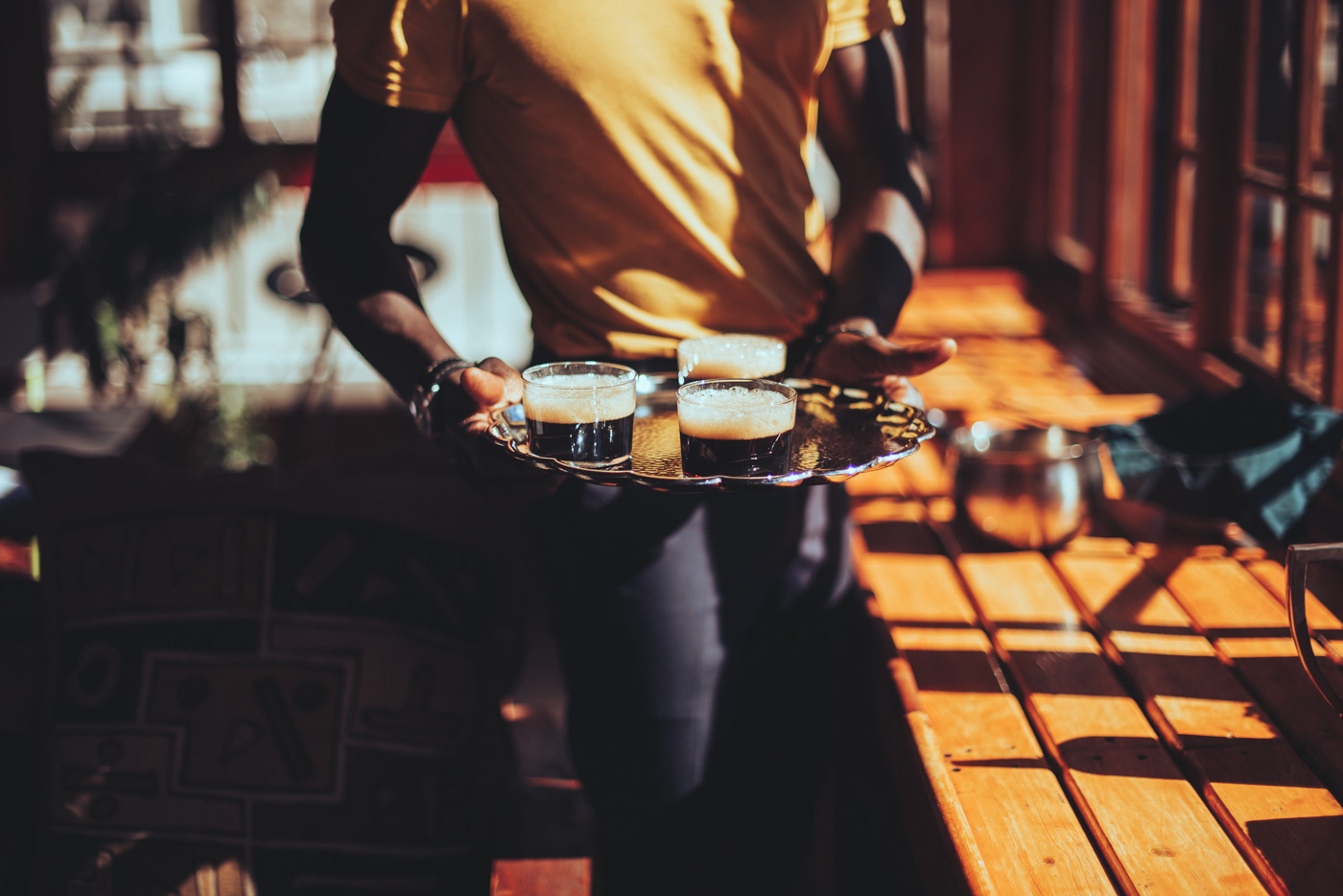
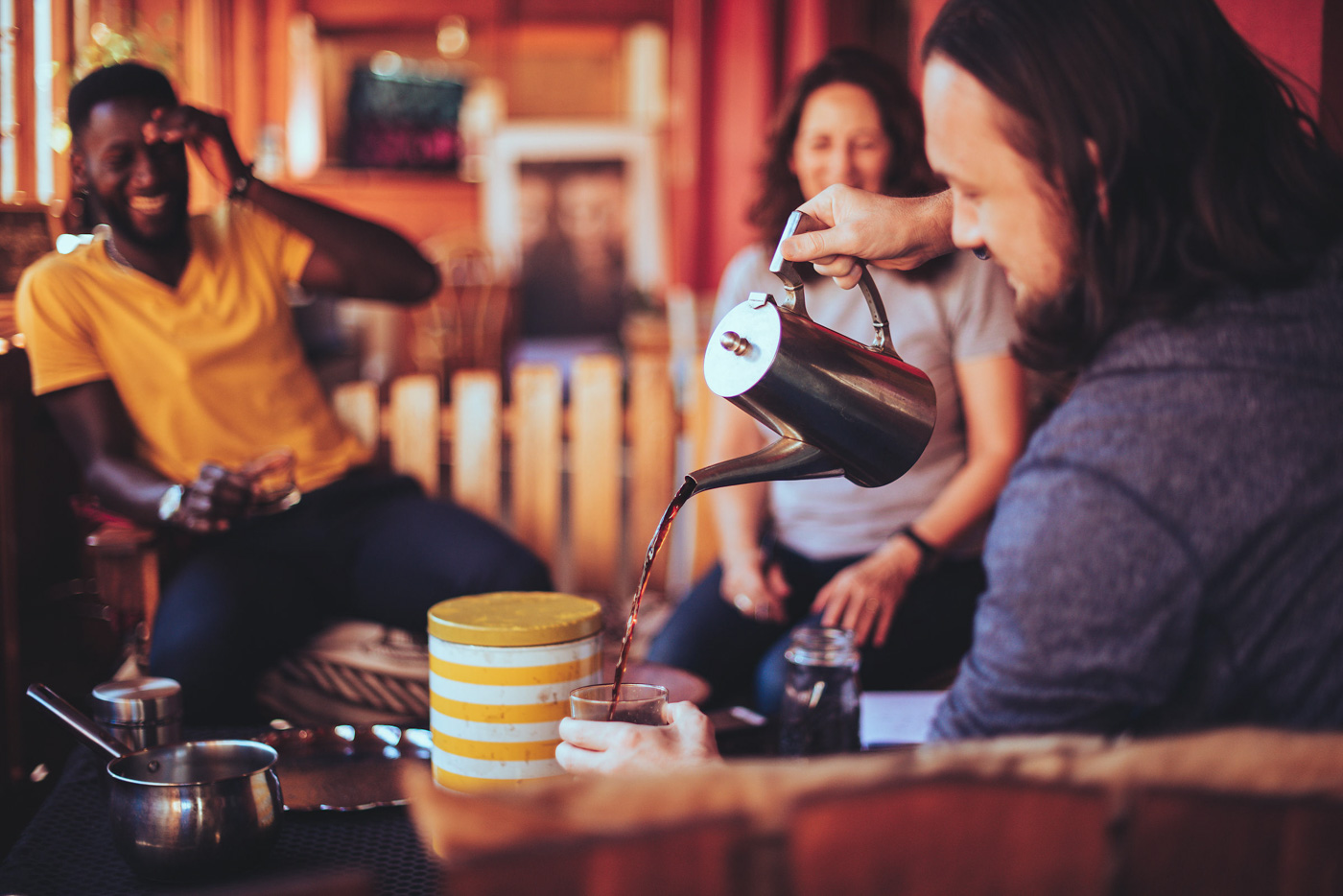
With the coffee, we eat a typical Senegalese breakfast. Slices of a sandwich on a baguette, the filling a bright and fiery mix of fish, chili, black pepper and vinegar (other fillings are beef, chicken and sauced spaghetti or macaroni). Other morning options are beignets (he also calls them cookies), and Senegalese pies called fataya—the size and shape of empanadas—filled with spicy meat or chicken.
The rhythm of Diagne’s life is a non-stop ricochet between urban points, all within a half-mile square area: apartment, mosque, coffee shop and market stall on the city’s historic Greenmarket Square, where he is one of the open-air market’s mostly foreign vendors (of which he guesses about twenty-five are Senegalese). Originally a thriving produce market, the cobblestoned central square has had many incarnations, including as a parking lot. Today it is a curio market, where tourists shop for wooden salad servers and masks, bright printed fabric, and beaded work to take home—with much of it not from South Africa. Selling original paintings here is his side hustle. Most are painted by immigrants—Senegalese, Malawians, Tanzanians, Zimbabweans, Congolese and Ugandans—who live in Cape Town.
There is fierce competition for stalls here, he tells me, and it wasn’t easy getting one. Before the city’s V&A Waterfront was developed into a commercial space, this was the place where tourists bought their souvenirs. Greenmarket Square is two blocks from his coffee shop. When he’s not around, another Senegalese man named Thierno watches over the stall. As I walk through the square with Diagne, he’s greeted widely. “He’s my homeboy,” he says about another Senegalese trader.
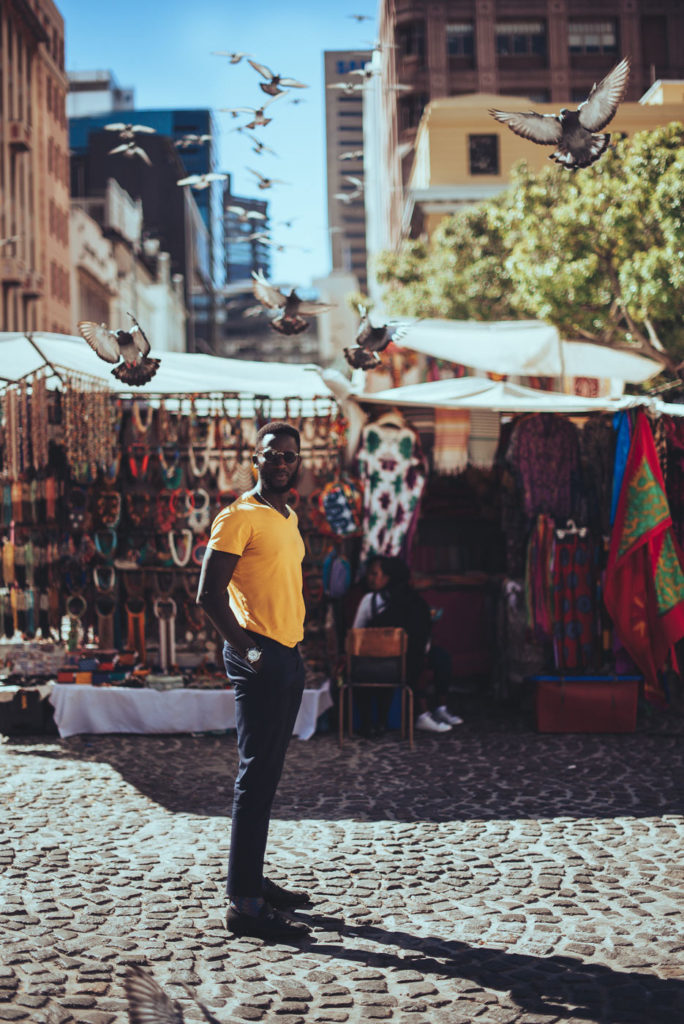
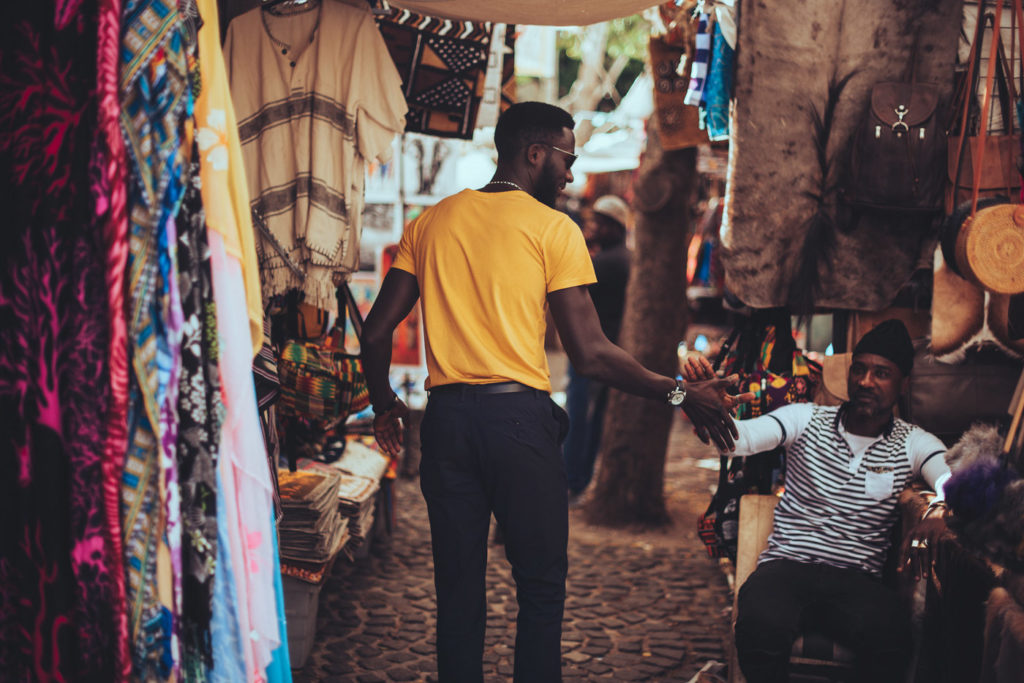
Diagne’s coffee business began at this square, when he started selling café Touba to vendors from a mobile unit: essentially, a backpack with two flasks of coffee. He still does this today, as an adjunct to his café business.
He has loved coffee since he was a little boy. So much so that he risked punishment for drinking it. “I was not allowed to drink it as a child, so I used to sneak it when my parents and grandparents weren’t looking,” he says. His family have coffee businesses in Senegal; his mom has a small stand in front of his uncle’s carpentry workshop in Dakar, and his aunt has a larger business in Touba.
“Life is interesting,” he says about his journey from Senegal to Cape Town. He grew up an only child in a small village, where there was no formal education available. Instead, he studied at a local Madrassah, where he learned to read the Koran in Arabic. His home language was Wolof, and he only learned the French and English he speaks now after leaving Senegal. At twenty-six, he was looking for something different, but didn’t know what, or where he’d end up.
In 2011, he took a bus from Dakar to Mali, which he didn’t like, and after a few days he took another to Benin where he spent a week. From there, he flew to Central African Republic and after two weeks he travelled by boat to Congo, which also didn’t suit him. He applied for a visa to South Africa and about five months after leaving Senegal, he reached Johannesburg with $50 in his pocket.
Time and time again, “the Senegalese community” looked after him. When he arrived in Johannesburg, a place where he knew no one, there was a community member at the airport to meet him. By the time he got to Cape Town, his savings had dwindled down to a couple of dollars. He went to stay “with the community” in one of a few apartments rented by Senegalese, in Brooklyn (Cape Town), a run-down area largely populated by migrants. He lived there rent-free: nothing was expected of him until he got on his feet. For six months he worked in carpentry, and on weekends sold sunglasses, belts and caps at the beach. Eventually he moved out, but like others, he helps when he can, returning on Saturdays to pray and give what he can afford.
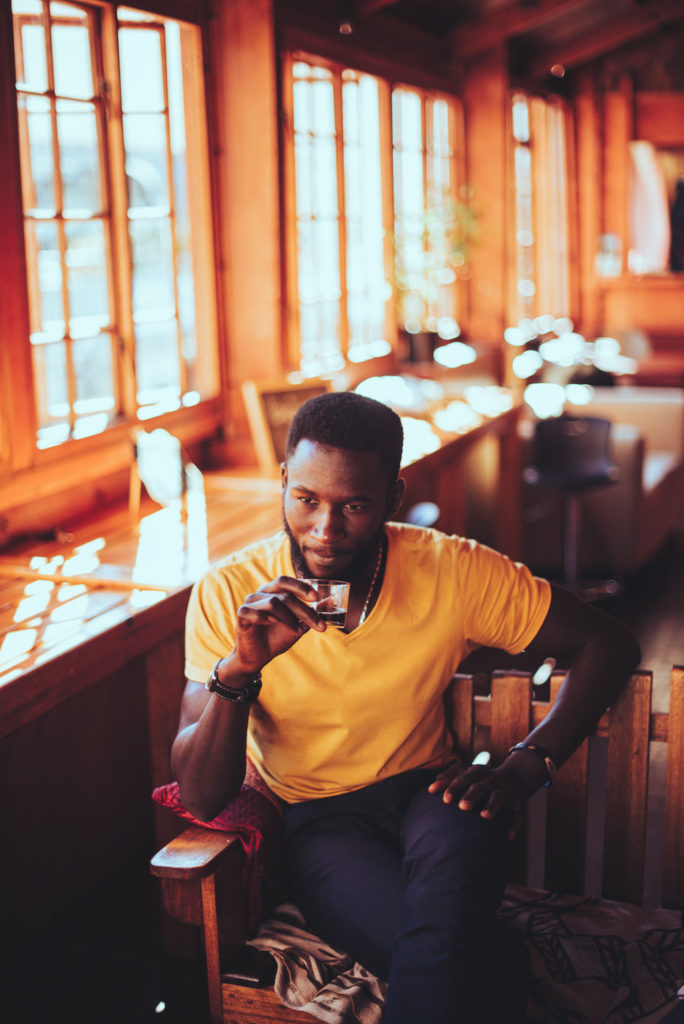
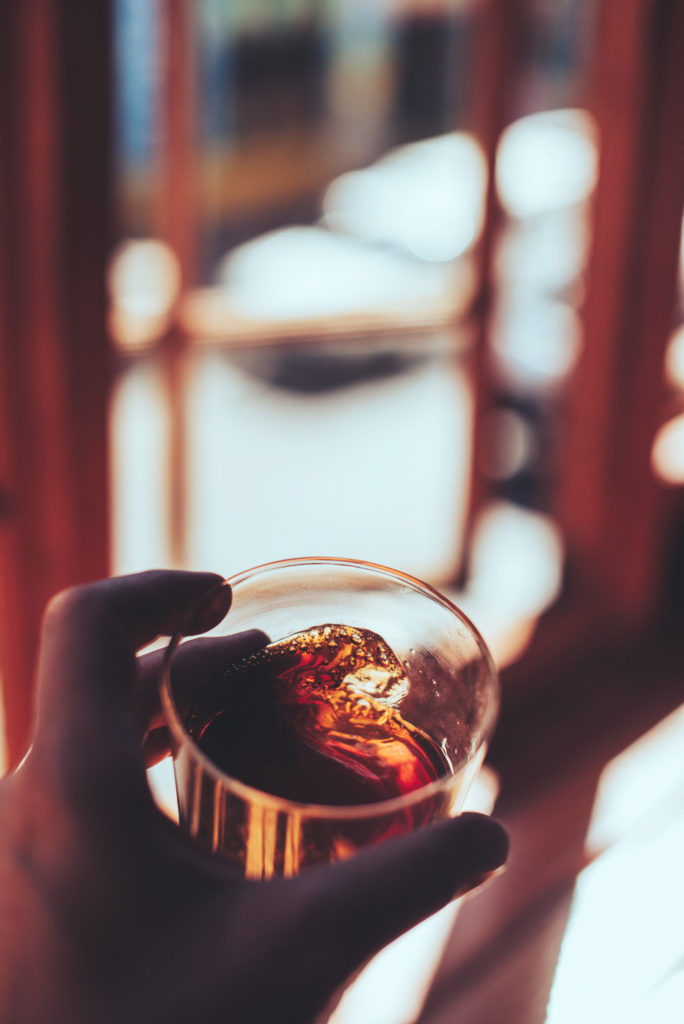
Khadim’s Café is open until nine p.m., and the food is Halaal. Many regular customers are immigrants, from Senegal, Cameroon and Mali. The food is spicy and hot, with couscous and rice dishes like yassa (a chicken stew loaded with onion) and mafé (a peanut and tomato sauce served with beef). “Nares ak diammu,” he says as he puts food on the table. “Enjoy,” or translated, “It will be peace for you.” Besides café Touba, there’s chilled hibiscus tea and attaya, a hot green tea drunk after meals that is also poured from a height for maximum frothiness.
I return to Khadim’s a couple of weeks after my first visit, on the second day of Ramadan. The café is quiet, as Muslims are observing the month-long fast from dawn to sunset. I’m curious if Ramadan is hard on his business. He nods, but tells me that regulars will come later, about six in the evening, to break their fast. Customers who come for breakfast get a free coffee. But this is not an incentive; this is religious duty—an act of generosity that is an expression of Ramadan.
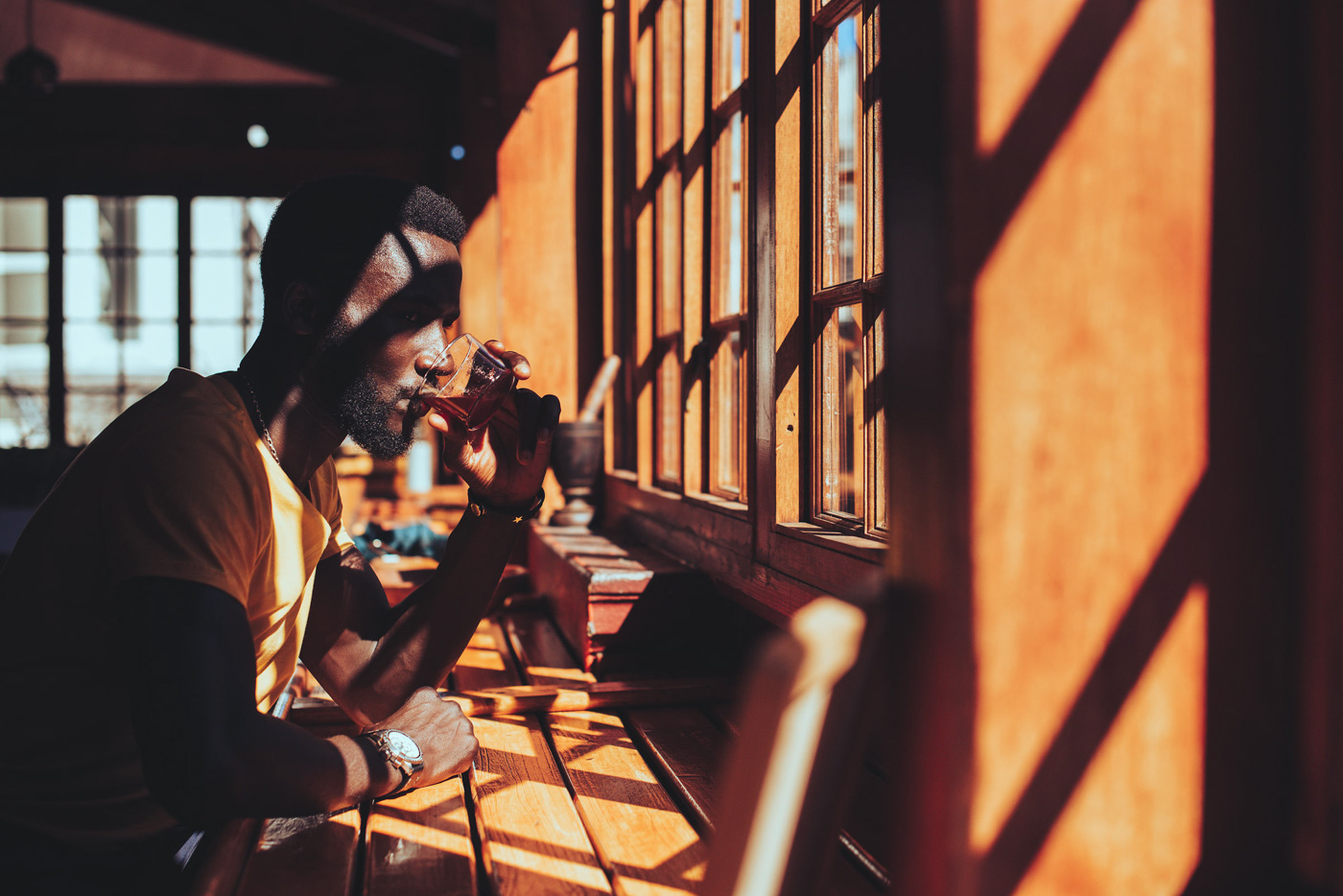
Money is Diagne’s greatest challenge. His rent in the city center is high as is the cost of importing the coffee from Senegal, which must be air freighted to Cape Town. Besides pride in his culture and its coffee, he now offers Airbnb Experiences, which serves as a creative revenue generator as well. Guests can experience a traditional Senagalese breakfast and coffee ceremony, or a drumming session fueled by café Touba. It’s a rare glimpse for most into a new culture and one immigrant’s life, warmed by spice, coffee and sunlight.
While Western-style coffee culture clearly has Cape Town in its grip, there’s little chance of cappuccinos replacing café Toubas at his establishment, although he does offer a “Toubaccino,”a café Touba with steamed milk.
Diagne dreams of someday importing and exporting Touba coffee, and of having a back and forth life between Cape Town, which he loves, and Senegal. In the short term, his sights are set on hanging a sign above his establishment, for which he’s saving up. While he misses Senegal and his family, at least for now, home is where the café Touba is, and “the community” of Cape Town, South Africa.






Our comments section is for members only.
Join today to gain exclusive access.